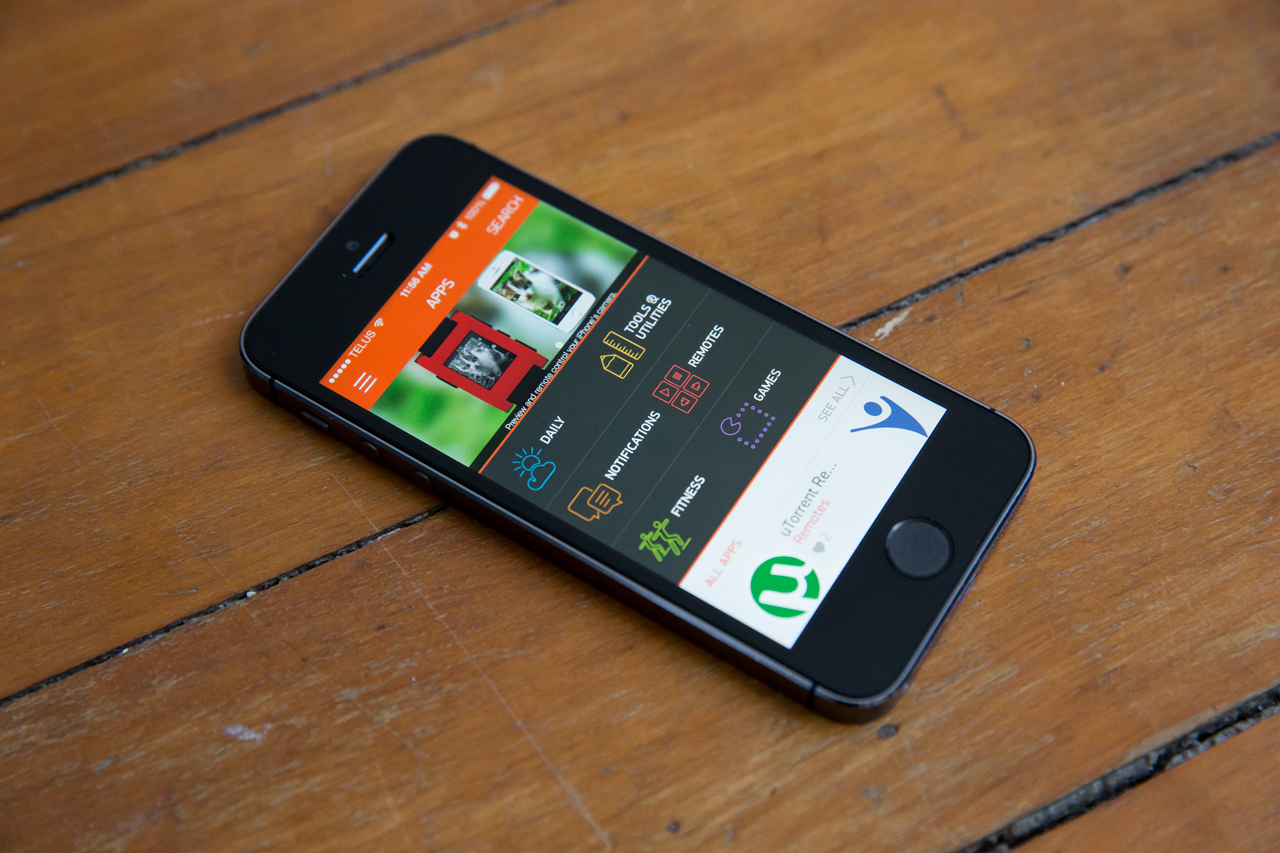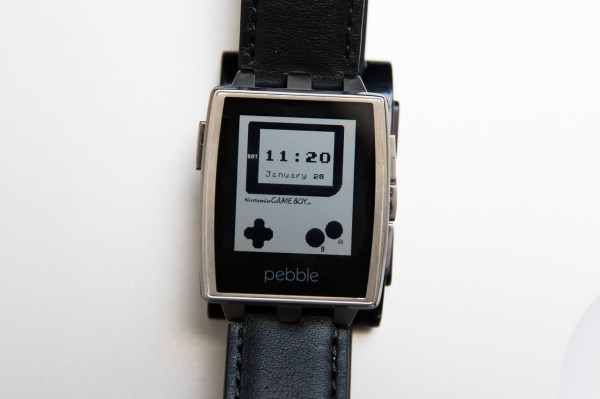The new Pebble Steel (which starts shipping today) has a lot in common with its predecessor, but it also comes with a software update that makes any and all Pebbles into essentially new devices, so the overall experience of owning one is actually quite different, and (spoiler alert) much improved.
Basics
- 5-7 day battery
- 144×168 e-ink display
- 56g (1.97 oz)
- Waterproof to 5ATM
- RGB LED
- Metal case with leather and metal band
- MSRP: $249
- Product info page
Pros
- Glass-covered display
- Improved looks
- LED light has lots of potential uses
Cons
- Expensive, given functionality is the same as the $149 original Pebble
- Proprietary lug design, incompatible with standard watchbands
Design
[gallery ids="948297,948298,948299,948300,948301,948302,948303,948304,948347"]
There’s no question in my mind: The Pebble Steel is heads and tails a better designed device than the original Pebble. The steel construction feels much more durable and substantial when worn, and yet also manages not to add too much weight to the device overall. Both color options are attractive (though I prefer the PVD-treated matte black colorway) and the decision to include both steel link and leather bands (only the leather was included with the review device) in the box is a very nice touch that provides options for dressing the Steel up or down depending on your needs.
Both bands are comfortable and have a quality feel, and the case for the Pebble is much-improved too, thanks to a smaller surrounding bezel and the upgrade to materials, including a Gorilla Glass face that makes the display easier to read and also better protects the screen itself. Also, the LED is completely hidden on the bottom left of the bezel when not in use, which makes for a nice and clean look.
If there’s a failing to the design, it’s that Pebble has opted to go with a proprietary three-pronged lug design to hold the watchstrap, which means that you can’t use off-the-shelf standard bands. Swiss watchmaker Swatch does the same thing, which limits your choice to only what they offer. It’s annoying, but it also provides a potential revenue source for Pebble down the road so I can understand why they opted to go that route.
The vaguely eighties retro vibe the watch gives off is reminiscent of Braun and Sony ID from a heyday of steel and angles, however, and it marks the first time I can honestly say I’d wear a Pebble without the smart features, which is no light praise since I’m a bit of a watch snob.
Features And Software
 Users of the original Pebble won’t find much new here in terms of features, but the addition of the Pebble appstore with SDK 2.0 marks a huge improvement in the software ecosystem. Many of the apps available were out before, but now they’re centralized in the appstore, which appears on both the iOS and Android Pebble companion apps.
Users of the original Pebble won’t find much new here in terms of features, but the addition of the Pebble appstore with SDK 2.0 marks a huge improvement in the software ecosystem. Many of the apps available were out before, but now they’re centralized in the appstore, which appears on both the iOS and Android Pebble companion apps.
Browsing and discoverability in the software store reminds me of what it was like to find apps for iOS and Android in the early days of both of those software marketplaces: there’s a lot of scrolling, and some limitations in terms of organization of content, but overall it’s still much better than the process has been. An app manager for shuffling software to and from your device, and for inputting login credentials and altering other settings also makes a big difference in terms of improving usability of third-party software.
[gallery ids="948308,948309,948311"]
The new method for viewing past notifications is excellent, and the archive strikes a good balance between fitting a number of updates on screen and providing enough info that you recall the full missive. Apps are listed under the main menu, which isn’t entirely painless in terms of navigation, but the limit of eight apps/custom watchfaces means you never have to scroll too far to find any. That eight app limit is a pain, however: It’s like Sophie’s Choice trying to figure out whether you want the app that controls your Philips Hue lighting system or the one that offers on-wrist package tracking.
It doesn’t help that there are new partner apps making their debut today, too. The Foursquare, Yelp, GoPro and ESPN apps were available for testing, and while I don’t have a GoPro and I don’t care all that much about sports (which is good because I couldn’t get the ESPN app to load anything beyond a sample screen), the other two location-aware apps really demonstrated how much potential Pebble has for app developers.
Foursquare allows you to view nearby spots and check-in directly from your wrist, with a refresh feature triggered by flicking your wrist. The Yelp app uses a wrist flip to trigger discovery of a single local spot to recommend, but it also provides listings of nearby places organized by venue type, complete with star ratings and up to three reviews you can actually read through on your wrist. Both are great examples of how to intelligently build software for Pebble (or any smartwatch), by focusing on features that make sense on the wrist and leaving the rest to the smartphone.
Other highlight apps for me include Huebble, which provides wrist-based control over your Philips Hue lighting system, and Twebble, which is a full-featured Twitter client on your wrist. The Pebble appstore has around 1,000 apps currently, with over 6,000 devs registered, and overall I was impressed at the quality of software. Other platforms have launched with an abundance of throwaway apps, but those in Pebble’s marketplace seem to at least mostly attempt to provide genuine utility.
Performance
The Pebble Steel had performed well, basically as I’ve come to expect from my original Kickstarter edition Pebble. Sometimes the Pebble pre-release software and appstore crashed, but that’s to be expected, and it’s probably the reason Pebble says the appstore is still “coming very soon” rather than launching today. It’s early to tell with absolute certainty, but battery life seems to be in keeping with its predecessor as well.
If you haven’t picked up a Pebble in a while and you’re an iOS user, you’ll be pleasantly surprised by how infrequently it asks for renewed permission to communicate with your phone. The LED notification light isn’t currently being used for much, but it does change from orange or red to green while connected to the power cable to let you know when the device is fully charged. The cable is another minor annoyance, since it’s proprietary and magnetic like the one that shipped with the first version, but also features a different connector design that nullifies any chance at backwards compatibility.
Overall, though, the Pebble Steel improves on the original in all the hardware aspects where it felt like it could’ve used a bit more time in the oven, and leaves relatively untouched the software stuff that the startup got right.
Bottom Line
The Pebble is most definitely an evolutionary product; in many ways, it’s like the iPhone 5c to the iPhone 5, except with an upgrade to materials rather than a move somewhat down market. But that might also be just what Pebble needs in terms of spurring more mass market interest, while avoiding the perception that they’re punishing early adopters by putting out massively updated hardware.
In the end, the Pebble (Steel or otherwise) is still the best smartwatch available. After using the Steel, it takes the crown as my new favorite device in that category, however, since the materials used and the construction quality really make it feel like a brand new piece of equipment. Pair that with the appstore and quality software from marquee partners, and I’m confident Pebble can keep its smartwatch crown for at least a little while longer.
